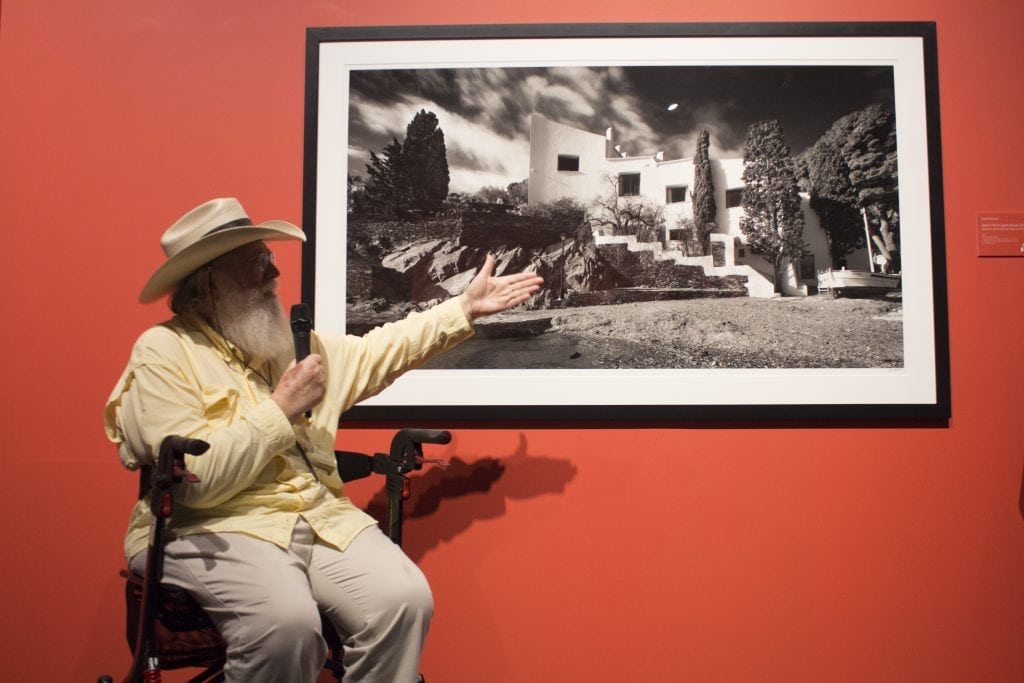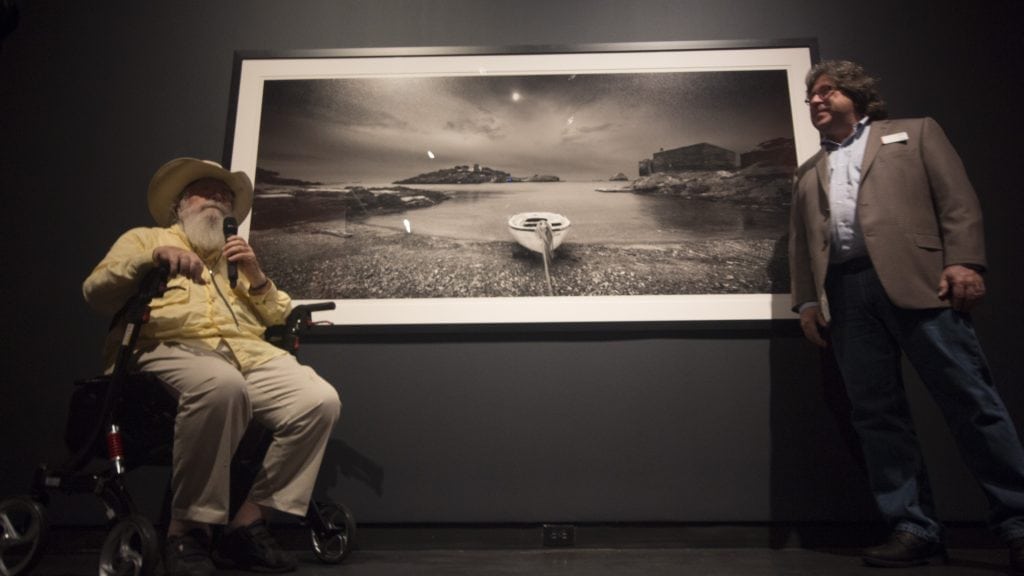
Dalí’s Home Through the Lens
of a Florida Living Legend
By Eva Avenue, July 30, 2018
Known for his large-scale Ansel Adams-esque black-and-white depictions of natural Florida, Clyde Butcher brought his expansive lens to Dali’s birthplace in Cadaques, Port Lligat and Cap de Creus, all in the northeast section of Spain.
The famed photographer visited the surrealist’s stomping grounds with his family and members of Spain’s Dali Foundation in preparation for Clyde Butcher: Visions of Dalí, which runs through Nov. 25.
It all started with an idea of a former museum employee: Artist Craig Petersburg, former education manager at the Dalí Museum, said he met famed photographer Clyde Butcher in Naples when Butcher was the keynote speaker at a State conference for the Florida Arts Association. Petersburg gave his razor-blade business card (he makes art with razor blades) to Butcher’s assistant and told her he was with the Dali Museum if Butcher ever wants to talk.
Butcher approached a half-hour later and Petersburg found himself saying out loud, “I have a crazy idea. What if we could find a way to send you to Spain and get you to shoot Spain the way you shoot Florida?’
“Let’s do it,” Butcher responded.
It took a few years to make it happen, and he didn’t know if it was happening until he heard it through the grapevine. Petersburg pointed out that it’s the first time a living artist has had a solo exhibition at The Dalí.
Butcher entered the Dali Museum press preview, held earlier this summer, in his wheelchair. He endured a minor stroke after his trip to Spain and explained to a crowd of journalists what it took to get certain photos and what each location meant to Dalí.
“It’s not an easy land to photograph,” Hine told reporters. “The winds blow strong. Sometimes there were only two photos to be taken in a day. It’s a work of passion and genius to create this vision of Dalí’s homeland by our Florida photographer Clyde Butcher. I think you’re going to be amazed by the exhibition.”

Butcher and curator of education Peter Tush spoke next, in front of a huge boat painting, a view from which Dalí painted a number of his works. It took Butcher a while to get this shot. Between people coming into his frame and the less-than-ideal states of the sky until it was captivatingly stormy and no one was out on the water. Some fishermen lived in a house nearby and they kept coming over in their rubber dingy and getting in the way of his picture.
“Who wants a picture of a rubber dingy?” Butcher said, as if reliving his exasperation.
“I would suggest if you want to visit, go in February,” he added. “In the summer, there’s too many people. There’d be people all over the place. But we almost had the place to ourselves. I was there every day, four or five times back and forth to the same spot. You can find the right spot but the light’s not right, sky’s not right. Shot of boats in the village, that’s the first scene we saw coming in. Grabbed my camera and jumped off the wall there and it was one of the first pictures I took.”
You can’t help but see similar shadows and shapes of Dali’s paintings. Likewise, Butcher plays with hidden images in his landscapes and subjects. For instance, in one epic standout photo, a massive cloud formation appears to be the subject at first glance, but when you get closer you, realize you’re seeing rocks.
Plus, it’s exciting to walk through Dali’s favorite spots. Butcher unknowingly found himself drawn to some of the same places. They offered vantage points to admire breathtaking landscapes. He also got shot of Dali’s house, which proves to be as interesting as his paintings.

“So when you look around the area behind us, you’ll see the area of a little inlet just past the beach where we were a moment ago,” Tush explained. “We come to an area that was just 10 minutes away from Cadaqués, where, when Dalí had a falling out with his father, he moved to the very next inlet known as Port Lligat.”
Dalí and wife Gala purchased a small fishing shack in 1929-30, and slowly over time, he made a little more money. He would purchase the next fishing shack and then the next fishing shack until finally they were able to combine all these different shacks and turn it into “this really remarkably organic and appropriate place where Dali lives.”
The artist wrote about as much as he painted, and the photos are supplemented with large quotes on the walls. Dalí would mention that he needed to be in Port Lligat to see the sailors, see the color of the olives trees and the bread, to feel the landscape. Aside from the eight years he was in America during the war, he always returned home.
Clyde Butcher: Visions of Dalí will be on view through Nov. 25. General admission is $24. Special pricing for children, students, senior citizens, military, police, fire and educators is available in advance online or at the museum. Thursday evenings, from 5 to 8 p.m., features a discounted rate of $10 for everyone. The museum is located at 1 Dali Blvd, St. Petersburg. In conjunction with the exhibition, The Dali has exciting events planned throughout its duration.


